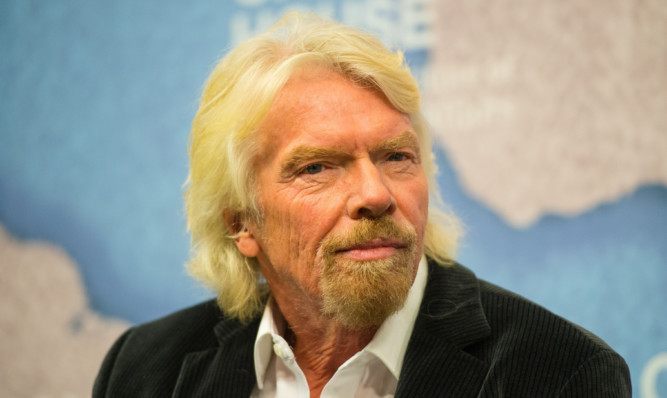Sir Richard Branson is set to unveil the new Virgin Galactic SpaceShipTwo as the company pushes ahead in the race to send passengers into space.
Appearing on Good Morning Britain, the billionaire businessman stood in front of the “mothership”, with the big reveal of the newest craft set to happen in California later on Friday.
Designed to take thrill-seekers into space, seats on the ride, which can carry six passengers at a time, will cost 250,000 US dollars – around £174,500 – with more than 700 people said to have signed up for the journey so far.
SpaceShipTwo’s arrival signals a return to testing for Virgin Galactic, the arm of the tycoon’s empire that hopes to be the first to take tourists on trips into space.
Sir Richard said people “expect companies like Virgin to push forward” and that after Friday’s unveiling, rigorous testing will take place over the next 12 months.
He said that “hopefully” they are “nearly at the end of a 10-year programme” to get Virgin Galactic this far.
“We will send people to space once pilots have tested the ship time and time and time again,” Sir Richard told the ITV show.
In 2014 the commercial space programme suffered a setback when one pilot was killed and another seriously injured during a test flight of the prototype space tourism rocket.
Just over a year since the death, he told GMB: “Obviously it was a horrendous day when it happened and I must admit we had moments where I questioned if we should carry on.
“Talking to engineers and astronauts and family members and the public, we got all the feedback and it was apparent there was no way we could stop.”
He added: “Nasa had issues in its time, it is part of the process of trying to achieve things that we have not before.”
The team behind the latest suborbital spaceplane includes leaders from Nasa’s mission control and astronaut corps, the militaries from three nations and from the top flight of the aviation and transport industries.
Virgin Galactic said: “We’ve charged them with developing a plan to safely test and operate a reusable spacecraft. They have done their homework and subjected their processes to expert external reviews, and they are eager to take the proverbial keys to SpaceShipTwo.”
Sir Richard announced last July that the programme was “back on track” after the conclusion of an investigation by US authorities into the doomed October 2014 test flight.
Test co-pilot Michael Alsbury died when a prototype broke apart over the Mojave desert. A probe by the National Transportation Safety Body found the crash was caused by a catastrophic structural failure triggered when the co-pilot unlocked the craft’s braking system early.
Transforming Sir Richard’s dream of commercial spaceflight from the drawing board to the launchpad required “clever ideas, lots of hard work, and above all else, lots and lots of testing”, the company said on Thursday.
